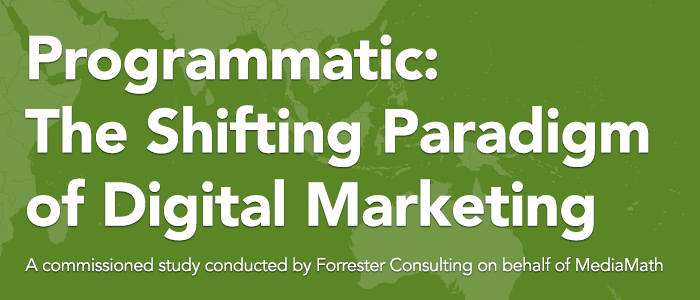Consideration for language, age and gender remain top priorities when it comes to audience targeting. DataXpand, which specializes in Hispanic audiences in the US, Latin America and Europe, recently revamped their entire offering by tripling their segments to show more than 260 new audiences in our T1 platform. Knowing that this is a key demographic that our advertisers are especially keen to hone in on, I spoke to Sebastian Yoffe, Managing Director & Co Founder of DataXpand, to find out more about the great strides they are making in this niche area.
Additionally, DataXpand and MediaMath are hosting a special educational session focusing on US Hispanic Audience Targeting on June 8th in our NYC offices. Please RSVP here if interested in attending.
- DataXpand is the first International data management platform (DMP) and Audience Marketplace with truly global scale and reach. What was your strategy for building your platform to allow this amount of scale?
DataXpand is the first DMP and audience marketplace focused on US Hispanics, Latin America and Europe. The company was founded in 2012, where we saw a huge opportunity to replicate what was going on in more advanced markets like the US and UK. Programmatic was starting to take off, but there was no international data to be found or very little of. So basically for programmatic to grow, the data ecosystem had to grow too. That’s where DataXpand came in. Our role became to fulfill the demand of advertisers that wanted to target based upon age, gender, interest and intent. We worked hard on building the correct relationships with local / regional publishers, which at first had no knowledge that they could monetize their data, so we were able to build meaningful and long-lasting relationships with them. Our efforts went to generating the need, stimulating demand side and sell side in order to create a market that did not exist at the time. Fast forward to today, we have partnerships with more than 600 publishers and 220 million unique users worldwide, and are connected into more than 40 platforms.
- You recently revamped your data offerings to triple the number of standard Hispanic segments available. Can you share the background for choosing to do this?
We live for our clients, so there was a lot of listening involved during this process, mostly work with advertisers, agencies, trading desks and DSPs. This is where we detected the need and we worked during the past six months to revamp our audience marketplace. US Hispanics is a great part of our offering where we evolved to capture the growth potential. We also launched Brand Discovery, which allows advertisers to plan their campaigns with audiences that relate to brands by reading and exploring content about them. These are audiences who are passionate and engaged with the lifestyle associated with certain brands and are always looking for news about them.
- You say on your website you “create the best and most reliable audience clusters based on how users browse, show interest or intent.” How do you do this?
We use our DMP technology in order to build all of our audience segments. Data sets are very unique and include more than 500 different segments. They are based only in anonymous data and specifically on users’ browsing behavior, interests, intent, lifestyles and preferences. Within our data sets, consideration of language, age and gender are top priority. Also available are custom, brand discovery, seasonal and lifestyle audiences.
- How do you plan to expand your strategy as the Hispanic demographic grows both in population size and purchasing power?
Almost 1 in 5 people in the US are Hispanic. They represent the largest minority, the second largest buying power, with $1.5 trillion; this represents a key demographic in terms of growth and advertising. This is why most brands are extremely interested in connecting with this audience. Our current offering is very robust since we reach 45 percent of the audience and offer over 130 segments classified by interest, intent, Brand Discovery and demographics. We are always working on growing and perfecting our offering. Right now we are developing audiences based on cultural aspects, language spoken and countries of origin. Some of these we currently offer as custom segments.
We are in the process of launching in Q3 our US audience offering, so we are very excited about this. It will add a completely new data set for the US, multiplying once again our volumes to cater to the US market needs in terms of interest, intent and B2B data. MediaMath will be one of the first platforms to showcase these new audiences.
- What are your insights on how to best cultivate a global partnership of those partners you work with?
We work globally, regionally and locally, or what’s commonly referred to as “glocal” (global-local) with partners. By this, I mean that if we want to have the best data segmentation of US Hispanics, we must find the best partner for US Hispanics. If we want data from Mexico, Argentina, Chile or Spain, we must go to the leading local players that also consider in the research the regional partners that can help reach multiple audiences in multiple geos. This has proven to be a successful model for us; we had to change our focus many times in order to find the correct partners and long-lasting relationships. We are always looking for the next area of growth. For instance, we see today many opportunities in mobile and offline-to-online data.










